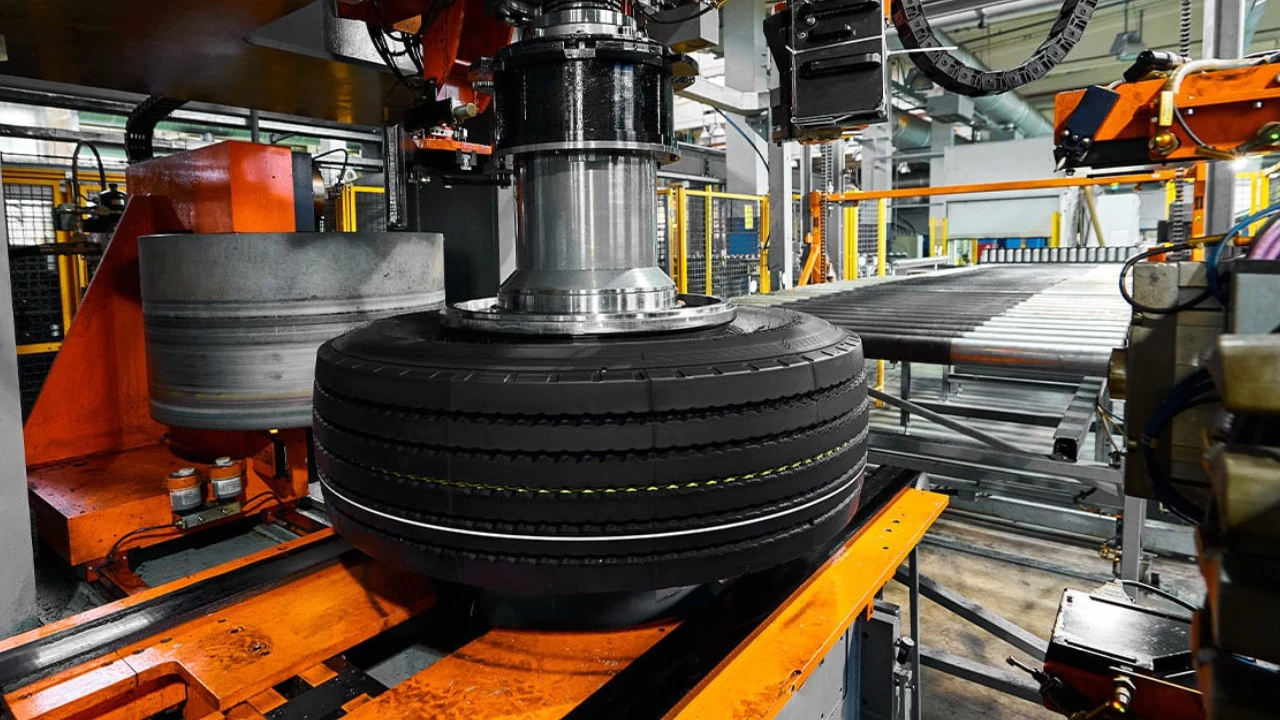The Role of Polyethylene Wax in Rubber Manufacturing & Formulation

Abstract
The incorporation of Polyethylene Wax (PE Wax) into rubber formulations is a critical exercise in polymer science, aimed at optimizing processability and enhancing end-product properties. This technical analysis delves beyond surface-level benefits to explore the fundamental mechanisms—including migration kinetics, lubrication physics, and compatibility—that define the efficacy of Polyethylene Wax in Rubber systems. For chemists and engineers seeking to solve complex production challenges, a precise understanding of these principles is indispensable.
1. Chemical and Physical Properties of Polyethylene Wax
Polyethylene Wax is a low-molecular-weight (Mw: 1,000-10,000 g/mol), highly crystalline homopolymer or copolymer of ethylene. Its performance in rubber compounds is dictated by key properties:
-
High Melting Point (100-140°C): Significantly higher than paraffin wax, allowing it to remain solid during initial mixing and calendering, then activating during vulcanization.
-
Low Molecular Weight: Facilitates the essential migration, or “blooming,” to the polymer surface.
-
Narrow Molecular Weight Distribution: Ensures consistent and predictable blooming behavior.
-
Hardness: Provides a scratch-resistant surface finish on the final rubber product.
These characteristics make it a superior processing aid and external lubricant compared to other wax types.
2. The Core Mechanism: Blooming Kinetics and Surface Migration
The primary function of Polyethylene Wax in Rubber is predicated on its controlled incompatibility—a phenomenon known as “blooming.” This is a diffusion-controlled process governed by temperature and solubility parameters.
-
Dispersion: During the non-productive (masterbatch) mixing stage, solid PE Wax is dispersed as fine particles throughout the rubber matrix.
-
Dissolution & Migration: As the temperature rises during the productive mix or vulcanization, the wax particles begin to dissolve in the rubber polymer. However, due to its limited solubility, it becomes supersaturated.
-
Surface Segregation: The supersaturated PE Wax migrates along the path of least resistance, driven by thermal energy, towards the air-polymer or polymer-mold interface—the hottest surfaces.
-
Crystallization: Upon reaching the surface, the wax molecules crystallize, forming a continuous, thin (often monomolecular), and coherent film.
This in-situ formed film is the foundation of its role as a mold release agent and protective barrier.
3. Advanced Functional Benefits in Rubber Formulation
Optimized Mold Release and Anti-Stick Performance
The blooming film acts as a physical partition, drastically reducing the adhesive forces between the rubber and the mold metal surface. This prevents fouling—the buildup of rubber residue on the mold—which is a primary cause of surface defects (e.g., tears, roughness). The result is a significant reduction in scrap rates, mold cleaning downtime, and the elimination of external mold release sprays that can contaminate the compound.
Rheology Modification and Internal Lubrication
Within the compound, Polyethylene Wax in Rubber acts as an internal lubricant by reducing polymer chain entanglement and friction between filler particles. This manifests as:
-
Reduced Mooney Viscosity: Lower mixing torques and easier compound handling.
-
Improved Die Swell Control: More consistent extrudate dimensions and profiles.
-
Lower Power Consumption: Reduced mechanical energy required for mixing and extrusion.
-
Enhanced Filler and Pigment Dispersion: The wax coats filler agglomerates, reducing their cohesive strength and promoting breakdown for a more homogeneous compound, which directly improves physical property consistency.
Enhanced Surface Characteristics and Protective Functionality
The crystalline wax layer on the finished product provides a superior satin-to-gloss finish that is aesthetically pleasing. Furthermore, this layer offers a degree of protection against ozone cracking by presenting a physical barrier to ozone diffusion, supplementing the action of chemical anti-ozonants.
Formulation Considerations and Compatibility
The effective use of Polyethylene Wax in Rubber requires careful consideration:
-
Dosage: Typical effective ranges are 0.5 to 3.0 PHR. Under-dosing leads to poor release; over-dosing can cause excessive bloom, potentially interfering with secondary operations like bonding or painting.
-
Polymer Compatibility: The blooming rate is influenced by the base polymer’s solubility parameter. It is highly effective in general-purpose rubbers like SBR, NR, and EPDM, but its behavior should be tested in polar rubbers like NBR or CR.
-
Synergy with Other Additives: PE Wax can work synergistically with other lubricants and processing aids. However, its interaction with other blooming agents (e.g., chemical anti-ozonants) must be evaluated to avoid over-blooming.
Frequently Asked Questions (FAQ) for Engineers and Formulators
ZÜMRÜT International Kimya: Your Technical Partner in Advanced Rubber Compounding
At ZÜMRÜT International Kimya Co., we understand that Polyethylene Wax in Rubber is not a commodity, but a precision tool. We supply a range of high-purity PE Wax grades characterized by their consistent molecular weight, controlled melting point, and optimal blooming behavior. Our technical team provides unparalleled support, offering:
-
Product Selection Guidance: Matching the correct PE Wax grade to your specific polymer system and process parameters.
-
Formulation Troubleshooting: Assisting in optimizing dosage and resolving issues related to over-/under blooming, dispersion, and compatibility.
-
Technical Data & Specifications: Providing comprehensive datasheets including melting point, viscosity, and acid number for informed decision-making.
Elevate your rubber manufacturing from art to a controlled science. Partner with ZÜMRÜT for chemical solutions backed by expertise.
Contact our technical specialists today:
-
Email: info@causticsodaco.com
-
WhatsApp: +971 50 720 9246
-
Website: www.causticsodaco.com

